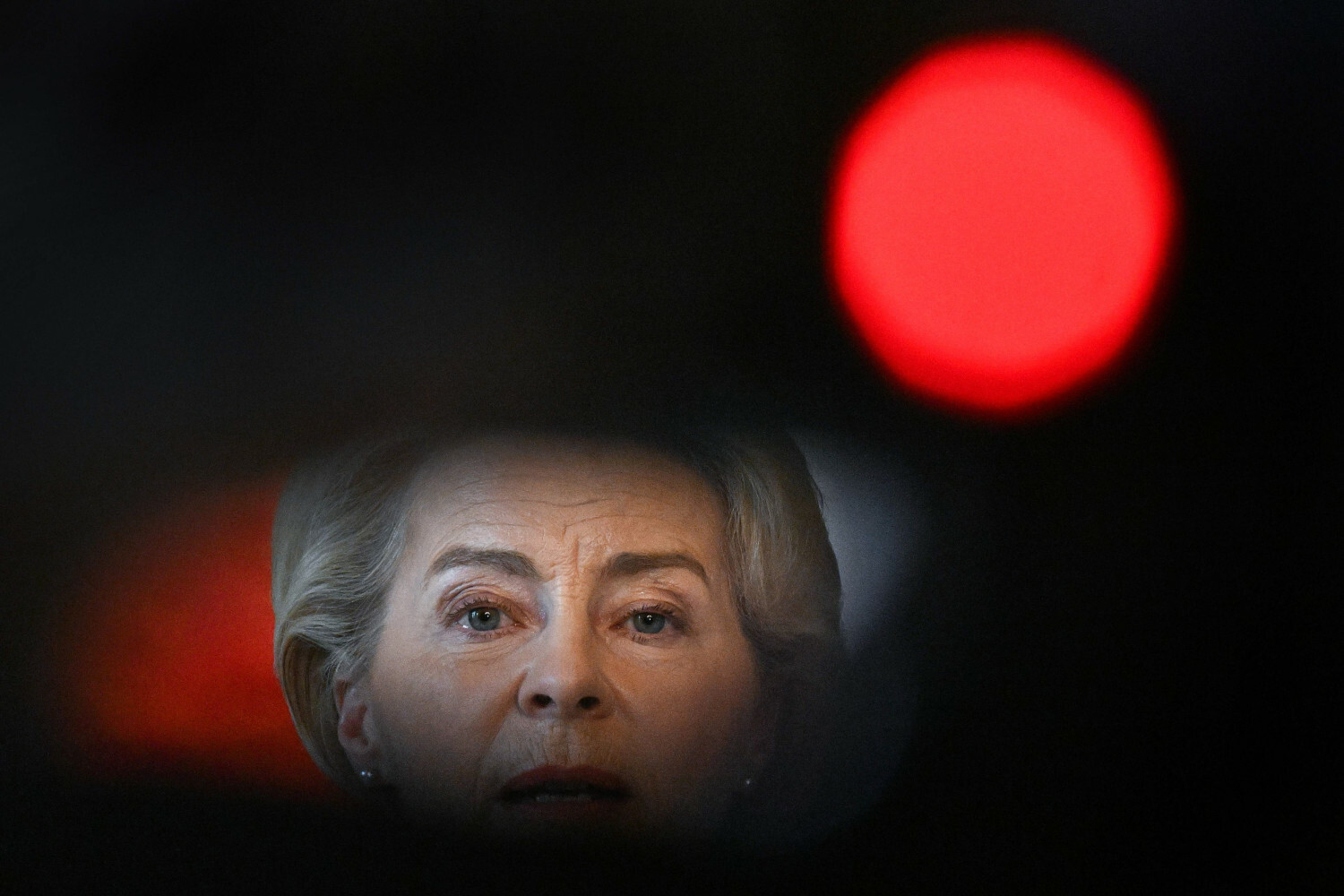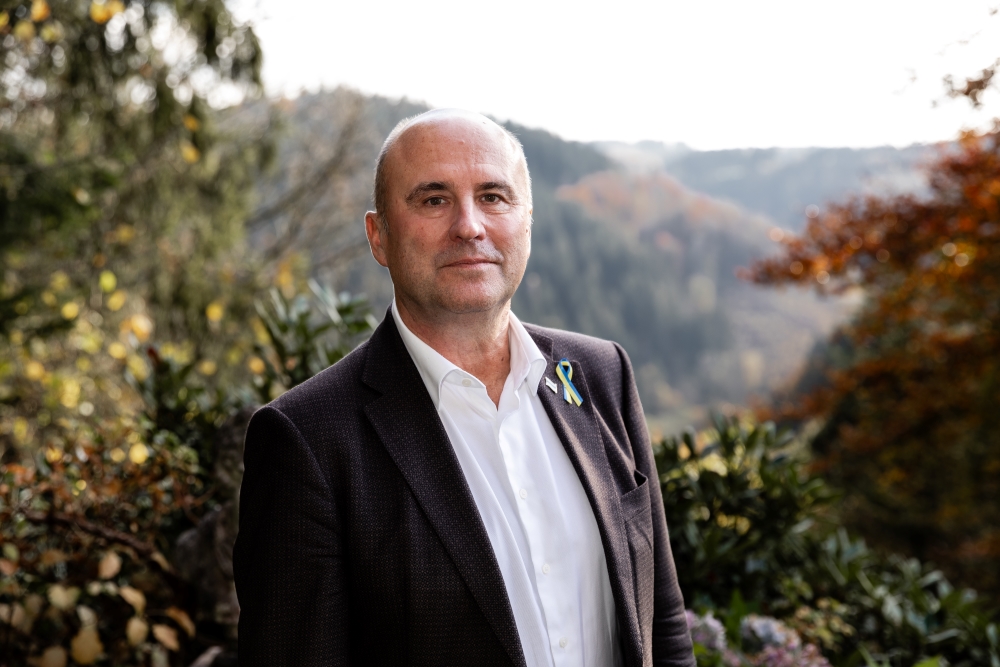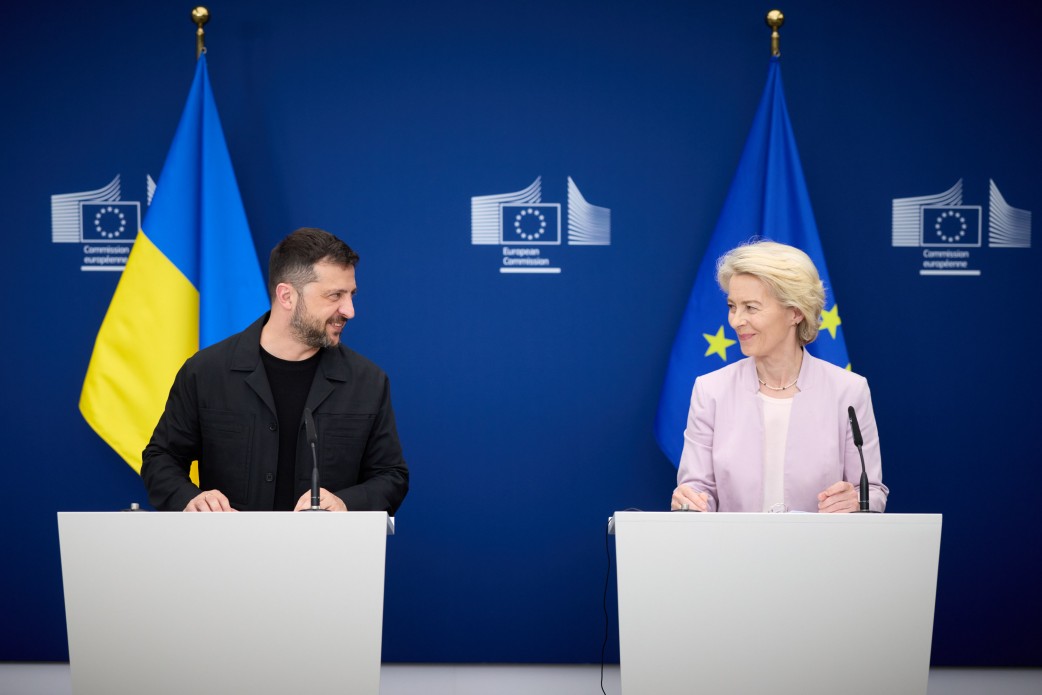Support Sestry
Even a small contribution to real journalism helps strengthen democracy. Join us, and together we will tell the world the inspiring stories of people fighting for freedom!
<add-big-frame>After many months of preparation and pilot training, the mighty roar of F-16 engines can finally be heard over Ukraine. The first shipment of 10 American-made fighters is already performing combat missions, and their presence can be felt on the frontlines. <add-big-frame>
<add-big-frame>Our modern fleet is expected to be joined by 20 new planes by the end of the year. While Ukrainian pilots are training, Kyiv could ask NATO member states about recruiting retired pilots. <add-big-frame>
<add-big-frame>«The deadliest F-16 pilot» of the American Air Force, retired Lieutenant Colonel of the United States Air Force Dan Hampton, also known as Two Dogs, is among those wanting to help Ukraine resist Russian aggression. He spoke about his ambitions to fight and how F-16 will turn the tables of this war in an exclusive interview with Sestry. <add-big-frame>
Marina Stepanenko: Mr Hampton, the first F-16s have finally arrived in Ukraine - how do you assess the journey from a categorical «no» to a definitive «yes»?
Dan Hampton: I think snails move faster, but you know, that does not matter anymore. I wish this had happened a year and a half or two years ago, but now that they are here, the focus should be on using them as effectively as possible to win the war.

Mr Hampton, you are one of the most decorated fighter pilots since the Vietnam War. Over your 20-year career, you completed 151 combat missions in the Middle East during both Gulf Wars. From your professional perspective, what should be the main priorities for the 10 aircraft we currently have? How should we use them?
Of course, it depends on your Air Force and your government, but I am confident they will agree that the first priority should be clearing the skies over Ukraine of Russian aircraft. Once you have air superiority and control your skies, you can move freely on the ground and do whatever you need to do. The Ukrainian Air Force has done a great job and shown immense bravery over the past few years, but I think the F-16s have arrived just in time.
If Ukraine can secure its airspace, it will have many opportunities to carry out other necessary operations to drive the Russians out
By the end of the year, the number of F-16s in our arsenal is expected to increase to 30. In your opinion, what opportunities will this open up for us?
The real advantage of the F-16, and what truly frightens the Russians, is that this aircraft can perform so many different tasks, and the pilots are trained to execute a wide variety of missions - whether it is close air support, air combat, or taking out surface-to-air missile systems - anything. So, the more aircraft you have, the more flexibility you will have to carry out multiple missions simultaneously, depending on the need.

Overall, Ukraine is expected to receive 79 F-16 fighters. President Volodymyr Zelenskyy has previously stated that to counter Russia in the sky effectively, we need at least 128 aircraft. So, my question is: will the promised number of F-16s be enough to impact the dynamics of the conflict and strengthen the military capabilities of the Ukrainian Armed Forces?
Absolutely. I mean, 30 aircraft would be a very strong start. That is roughly the size of one United States Air Force fighter squadron. So, if you end up with 79 or 80 aircraft, that is almost three squadrons. You could position them in different parts of the country, allowing them to conduct various types of missions. This would give you significant flexibility to support Ukrainian ground forces and push the Russians back across the border.
In Russia, they are trying to downplay the capabilities and potential impact of the F-16s on the battlefield. Yet, recent attacks suggest that the Russians are also targeting American F-16s by striking airfields. What does this behaviour and these actions from the aggressor indicate?
Desperation. They are trying to downplay the role of the F-16 because they have not been able to control the skies over Ukraine for over two years. And they know it. They know they can not advance on the ground without air superiority. They tried to achieve this in the first 10 days of the war, but the Ukrainians completely shattered them. So, of course, they are going to say things like that. But who believes what the Russians say, right? I mean, they make everything up. They lie. It is propaganda.
If I were there with my colleagues, flying and fighting alongside the Ukrainians, they would not need to find me. I would find them myself. And I am confident your pilots feel the same way. So, it does not matter what the Russians say
United States Senator Lindsey Graham, a Republican, has stated that he plans to ask President Joe Biden for permission to allow retired pilots to fly on Ukraine's behalf. You have previously mentioned that if you could, you would come to Ukraine and fight on our side. Do you still have that desire?
Absolutely. We are working on it. It is challenging for former officers, but I believe we will make it happen. There is a big difference between a volunteer with a rifle joining the ground forces and a former military officer flying to fight for Ukraine. So, these are political issues that, I hope - really hope - will be resolved very, very soon.
How do you feel about the idea of basing Ukrainian F-16s abroad for security reasons, for example, in Poland? There, you have good runways and maintenance capabilities. After all, Russia has kept its aircraft in Belarus and launched attacks from there.
It is no different. You know, everyone makes a big deal about not using Western weapons to strike Russian territory. But they constantly do it to Ukraine, don’t they? The Russians are using lousy North Korean ammunition, foolish drones from Iran, and other weapons. And, you know, it does not matter.
Regarding the use of Poland, it is a political issue. And since Poland is part of NATO, it makes the situation a bit more complicated. I do not have a definitive answer for you. I think Ukraine aims to have several well-protected airbases within its borders, where these aircraft can be serviced, repaired if necessary, and continue flying.
I do not think Ukraine wants to rely on anyone else, and you should not have to. And if everything goes as it should, you will not need to rely on others. You will get all the help and equipment you need, the political issues will be resolved, and you will win the war.
Do you foresee any logistical challenges in deploying and maintaining the F-16s in Ukraine?
You know, I can not give you a definite answer because I have not seen where these planes are based or what agreements have been made. I know that your government and military are smart enough to think through all of this, and they have had enough time to prepare for the arrival of the F-16s. So, I have to believe that everything necessary to keep these aircraft flying and fighting has already been established.

The United States will provide the F-16s with domestically produced missiles and other advanced weaponry, including the latest version of the AIM-120 AMRAAM air-to-air missile and the AIM-9X short-range air-to-air missile. Can you tell us what this weaponry is capable of?
This is a very good decision because you definitely need this weaponry, and it makes the F-16s significantly more dangerous for the Russians. The AIM-120 AMRAAM is an active radar-guided missile, which means that the aircraft launching it does not need to keep the enemy on its radar. It can fire the missile, which has its own radar inside, and it will head towards the target and destroy it. This allows the launching aircraft to target multiple enemy planes at the same time, and the missile will do the rest.
As for the AIM-9X, it is an infrared missile with a high range. You do not necessarily need to aim directly at the target. You could be sideways to the target, and the AIM-9 will find the heat source and take it out.
So that is good. This is top-notch weaponry used by our Air Force, and I am glad we are providing it to the Ukrainian Air Force
Despite the extensive support of F-16 weaponry, the United States still prohibits strikes deep into Russian territory from these jets. What could change Washington's stance on this matter?
That is a very good question. I do not understand politicians, so I can not figure out what they are thinking. I believe it is foolish to give someone a weapon and then tell them they can only use it up to a certain point.
And if Washington is trying to maintain some sort of friendship with Moscow for whatever reason, I do not see the point. I do not care what Vladimir Putin and the Kremlin think about Western weapons reaching Ukraine. After all, they are attacking Ukraine with their own weapons and those they are receiving from other countries, aren’t they?
So, what is the difference if the situation were reversed? Russia is not going to do anything reckless, like attacking NATO or the United States Even Putin would not go that far
I would like our government to be less timid and say, «Hey, this is your weapon, use it as you see fit». What are we going to do, take it back? I do not think so. So, I believe that once you have the necessary weapons, if the situation allows it, you will be able to use them as you deem appropriate.
What do you think should be the first target if we get the green light from Washington?
Airfields from which they launch those drones at your cities, and where they base their fighters and reconnaissance planes - that is what I would target. I would destroy the airfields and take out as many of their aircraft on the ground as possible. Again, I do not have the same information that your Air Force and government do.
I am confident that right now, they are doing what is best for Ukraine, and in the future, things will only get better
How effective do you think the training of Ukrainian pilots has been, considering that its duration had to be shortened to record lengths?
Yes, that is true. It was shortened. But your pilots were not complete novices. They all flew MiGs or Sukhois and were already fighter pilots. So, it is just a matter of teaching them to operate a new aircraft, learn new tactics and adapt to new equipment. The F-16 is very different from the aircraft they have flown before, but they were more than capable of mastering it.
I believe they were very impressed with the capabilities of the F-16, and they approached it with great enthusiasm and were very pleased to be learning to fly it. And from everything I have heard from my colleagues who trained your pilots, they handled the task very well.
Was the prior experience of flying MiGs or Sukhois more of a hindrance or a helpful skill during training on the F-16?
A bit of both. I have also transitioned from one aircraft to another, and I am sure they had a similar experience. You develop habits from your previous aircraft because all fighters are different. It is not like renting a car. You can not just jump in and fly. They are all different, and you need to learn each one.
And sometimes, especially if you have spent a lot of time on a previous aircraft, you have to unlearn certain habits and develop new ones. So, in that sense, it was a challenge, but no more so than for anyone else. What really helped them is that they are used to flying at speeds of 400 or 500 miles per hour (643 to 804 kilometres per hour), thanks to their previous experience.
They are accustomed to thinking very quickly and operating a jet aircraft. So, these are all good qualities that carry over from one aircraft to another
Can you share how the F-16 has performed in other wars or against similar adversaries in the past?
I participated in both Gulf Wars (the armed conflict from 1990 to 1991, where Iraq faced a coalition led by the United States. - Author), and while those were not Russians, they were using Russian equipment and were trained by Russians. In both cases, after the first 24 to 36 hours, the enemy air force stopped taking to the skies and engaging with us because those who did never made it back home.
I do not take them lightly. I do not underestimate them, but I do not overestimate them either. They have very significant weaknesses, and we are aware of them. We have the tactics and weapons that we have passed on to your pilots to be able to combat them quite effectively.
If you compare all the weapons for the F-16 that have been provided or promised to us with the best Russian weaponry, who would have the advantage, in your opinion?
The F-16 has the edge. It has a much better radar and can deploy a wider array of weapons that we have, much more effectively than the Russians can. So, I am confident that your pilots have been trained on all of this. They know the systems, they know the weapons, and I am sure they will use them correctly. And Ukraine will be proud of them.

In 2022, Russia employed S-300 missile systems to strike ground targets in Ukraine. Now, Russian arms manufacturers have once again upgraded this surface-to-air missile defence system for ground offensive operations. Among your achievements is the destruction of 21 such installations. Ukrainian forces may also need to target Russian air defence systems from the sky. What are the biggest challenges in such operations?
This is a very complex question. The mission of hunting down and destroying surface-to-air missile systems is the most dangerous in any air force, in any theatre of operations. It is far more risky than close air combat or shooting down enemy fighters in the air.
The Russians, to their credit, have always had good systems, and they have many of them. One of the primary challenges in any of these situations is pinpointing their exact location. We have assets in space and other places that can locate them.
I hope that all this information will be passed on to the Ukrainian Air Force so they can use it to do what needs to be done to eliminate these air defence systems.
This project is co-funded by the Polish-American Freedom Foundation as part of the «Support Ukraine» program, implemented by the «Education for Democracy» Foundation




Ukrainian journalist. Worked at the Ukrainian edition of Radio France Internationale. She was the senior editor of the English-language project of the Multimedia Broadcasting Platform of Ukraine. She held the position of international news department columnist at the «Inter» TV channel. She has also been involved in documentary filmmaking in the past. Currently, she is developing a Ukrainian-language YouTube project as an editor and scriptwriter.




















